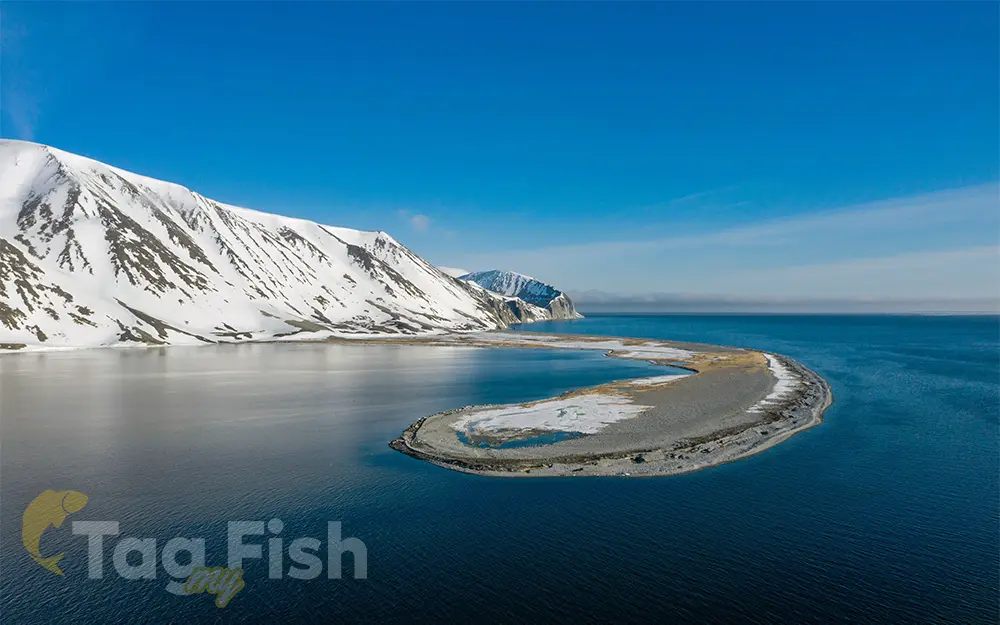Bering Sea

General data
- Name: Bering Sea
- Water system: Pacific Ocean
- Water type: Sae
- Progression: Pacific Ocean -> Planet Earth
- Climates: Subpolar, Polar
- Continents: Asia, North America
- Countries: Russia, United States of America
Description
The Bering Sea is a marginal sea of the Northern Pacific Ocean. It forms, along with the Bering Strait, the divide between the two largest landmasses on Earth: Eurasia and The Americas. It comprises a deep water basin, which then rises through a narrow slope into the shallower water above the continental shelves. The Bering Sea is named for Vitus Bering, a Danish navigator in Russian service, who, in 1728, was the first European to systematically explore it, sailing from the Pacific Ocean northward to the Arctic Ocean.


